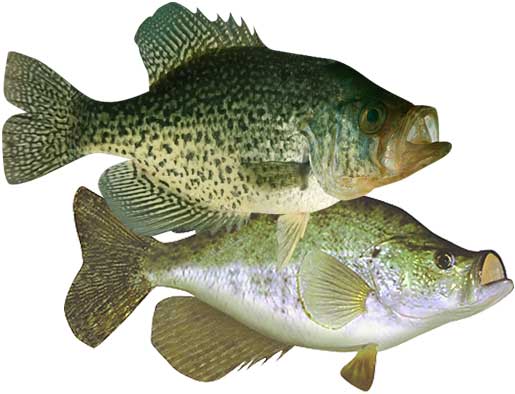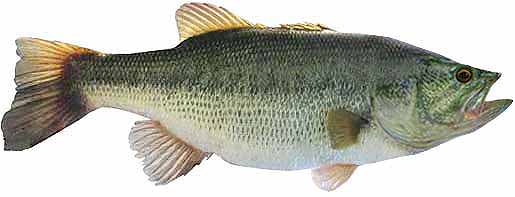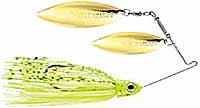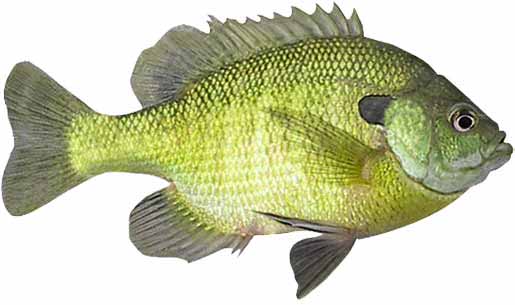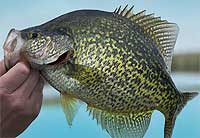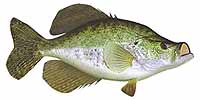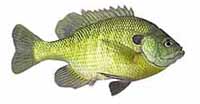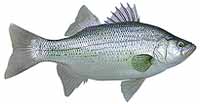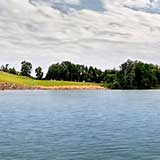Fishing Report For Seneca Lake, OH
By Rick Seaman
August 13, 2025
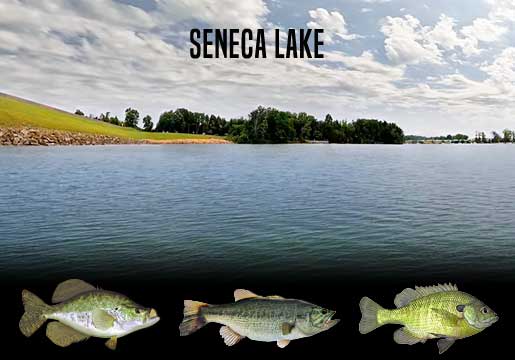
Fishing Reports
Popular Fish Species Seneca Lake, OH
Black & White Crappie
Current Report: Good To Very Good
Both black crappie and white crappie reside here with white crappie the more dominant species.
SUMMER. Water temperatures are currently in the mid to high 70's, and crappie fishing has been good. Now that the hot Summer sun has warmed the shallows, crappie are holding at depths of 12 to 20 feet. This is a good time to focus around docks and deep brush piles. Anglers are also locating schools of crappie hanging over deep brush and lay downs, above rocky structures and around creek channel edges.
FALL. Baitfish, which will be moving into shallow flats, coves and bays, will draw crappie into these areas, where they will feed heavily in preparation for the cold Winter. Small spoons, along with minnows, hair jigs, and crappie jigs, are good options during this feeding marathon.
WINTER. Once the shallows start cooling rapidly, crappie will migrate to deeper holding areas, mostly off shore. At this time they are typically caught using a very slow presentation, in 15 to 35 feet of water. Even though they are not in contact with the bottom, they may be relating to some cover, or structure change, directly below them.
SPRING. In early Spring, crappie begin staging in 8 to 10 feet of water, just outside shallow spawning bays and flats. Coves, bays and pockets on the north and northeast side of the lake are the first to warm. Spring is the ideal time to be on the water, as crappie have moved shallow and are feeding aggressively. At that time, they are typically caught in 2 to 4 feet of water. Docks, brush, wood and vegetation are where most anglers are typically catching good numbers using small crappie jigs or live minnows. After the spawn, crappie move outside the spawning area and typically hold deeper, on the closest cover. Once they move off the beds, anglers report good success using fish finders and forward facing sonar to locate schools of crappie, which tend to stack vertically around cover. Light tackle with 4 lb to 8 lb line is a popular choice.
Largemouth Bass
Current Report: Good
SUMMER. Water temperatures are in the mid to high 70's, so summer patterns are in full swing. Bass are feeding shallow early and late in the day, where they are being caught on topwater, crankbaits, vibrating jigs, and swimbaits. Largemouth bass here feed on gizzard shad, threadfin shad, small sunfish and crawfish. During the hotter parts of the day, they are being caught on points, channel edges, and ledges using spoons, drop shots and jigs. Some good reports are coming from anglers fishing the area outside the Seneca Marina Point Campground, up to the area around West Shore Cottage Area.
FALL. When Fall arrives, bass here will follow schools of baitfish into coves and shallow bays where spoons, swimbaits, and slow-rolled spinnerbaits have been successful in prior years. As deeper water cools, bait and bass move out to ledges, channel edges, points and humps where flutter spoons are often the ideal bait.
WINTER. Winter will isolate bass around slightly deeper structure, flats, points and creek channels. They can be found from 20 to 40 feet deep. Here they hold, feeding less frequently, awaiting warmer water to return in Spring.
SPRING. Once water temperatures rise into the low 60's, largemouth will move from wintering holes, to shallower water just outside spawning areas. Jerkbaits, spinnerbaits and vibrating jigs typically get bites just off the shoreline. At this time they are preparing for the spawn. Once water warms into the mid to high 60's, they will move into 1 to 4 feet of water, and create nests, then lay their eggs. Immediately afterwards, females move to deeper water and males remain to guard the eggs, and then the fry. After a couple weeks, the males also move to slightly deeper water. Deep diving crankbaits, vibrating jigs, plastic worms and swimbaits are catching bass offshore during this period.
Bluegill
Current Report: Good To Very Good
Bluegill are a primary food source for predator fish here, as well as a fun species to catch.
SUMMER. Following the spawn, most of the bigger bluegill migrate to deeper water, around 10 to 12 feet deep. They prefer brush, or rocky areas, often hanging out on steep, rocky banks where they can move up and down to feed without having to go a great distance. Small spoons, underspins, and mini-crankbaits are catching some of the bigger bluegill. Nightcrawlers are also catching good numbers.
FALL. Cool, Fall weather drops the water temperature in the shallows and lures bluegill to move up along the shoreline. Steep banks and shallow areas with quick drop-offs are holding schools now. Hair jigs, worms, spinners, and minnows are popular choices.
WINTER. Cooling shallows have driven the bluegill back to deeper structure with cover, in water ranging from 15 to 29 feet deep. In areas with no cover, anglers are finding them along steep rocky banks, points and humps with sharp drops into deeper water.
SPRING. In early Spring, bluegill migrate from deep winter holding areas toward the shoreline areas, and are typically caught around 5 to 10 feet deep. As the water warms to the mid 70's they will begin the spawning ritual, building nests in 1 to 4 feet of water. Many of the bigger bluegill prefer to spawn a bit deeper, depending on water clarity. Small spinners and swimbaits, or jigs tipped with small pieces of nightcrawlers or , crickets, are good choices for catching a lot of bluegill in Spring.
Fishing Video
Fish species to fish for...
Guide to fishing for largemouth bass, smallmouth bass, channel catfish, blue catfish, black crappie, white crappie, bluegill, white bass, hybrid striped bass and saugeye at Senecaville Lake in Ohio.
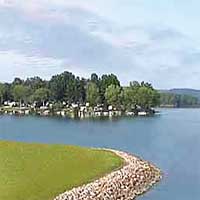
Seneca Lake is a 3,500-acre reservoir with 45 miles of shoreline. The lake is known for decent populations of largemouth bass, crappie, bluegill, and catfish. Other species include muskellunge, white bass and saugeye.
Primary fish species residing in Seneca Lake
Click images for fishing tips and details about each species.
Today's Weather & Forecast
Fishing Boat Rentals
Click here for fishing boat rentals.
Public Boat Launch Ramps & Landings
Senecaville Dam Road
Located in the northwest corner of the lake, off Senecaville Dam Road, this is a two-lane, concrete ramp with a dock and paved parking.
Marinas
Click here for marinas.
Fishing License
Click here for a Ohio Fishing License.
Map - Fishing & Access
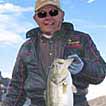
Rick Seaman is a fishing enthusiast with over five decades of fishing experience, a retired tournament fisherman, author of numerous published articles on fishing, and co-author of the book "Bass Fishing - It's not WHAT you throw, It's WHERE you throw it".
Contact Information
Seneca Lake Marina
16592 Lashley Rd
Senecaville, OH 43780
740 685-0015
Fishing lakes in each state
081325
Senecaville Lake, Ohio Report
OHIO


Seneca Lake offers hybrid striper fishing in eastern Ohio.


